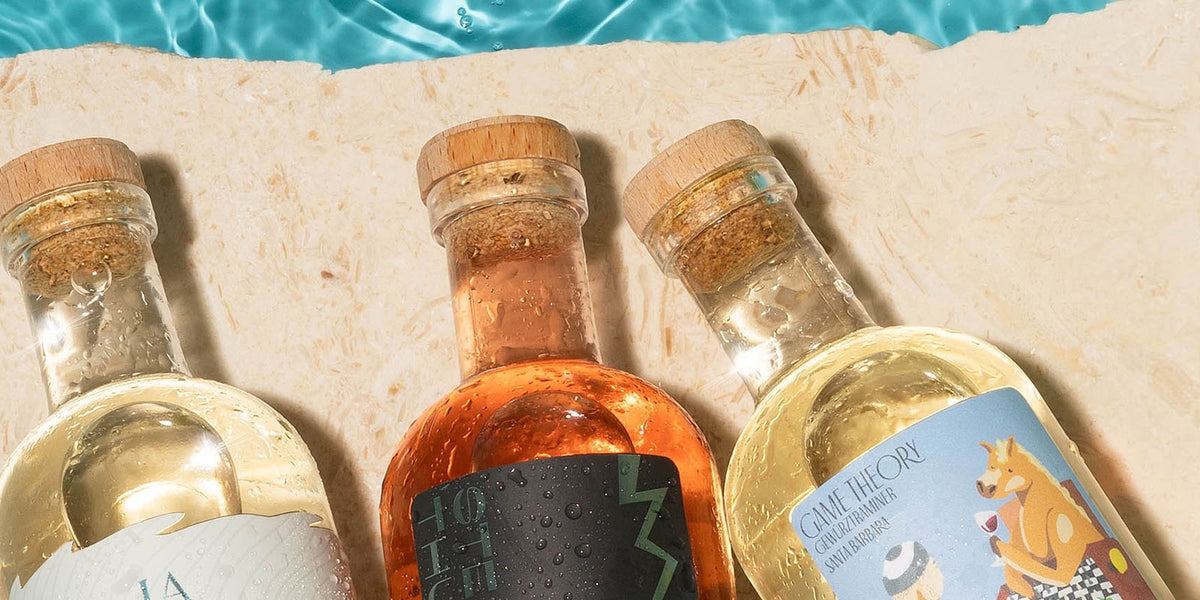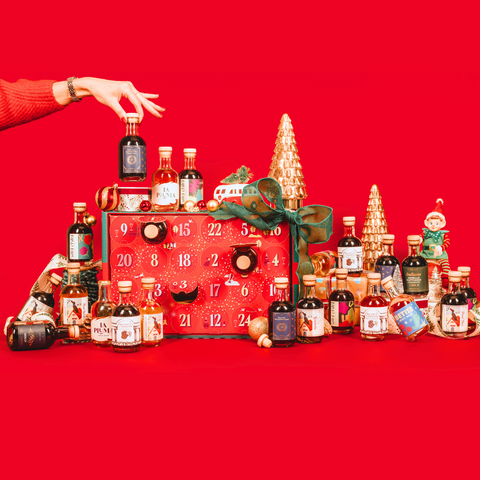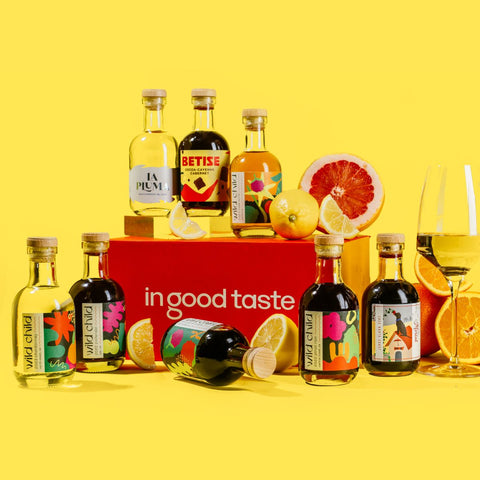One step closer to wine
The voyage into wine can come in many different forms and fashions. Whether it’s a girl’s trip to the winery or wanting to impress a date, knowing a little bit about wine can go a long way. Plus, you never know when you’ll fall in love—with the wine, that is. We’re not really sure what will happen with your date (sorry).
With so many options, colors, flavors, bottles, and bubbles, wine can be tough to figure out on your own. We’re here to help you understand wine better and gently nudge you a little closer to sipping your first glass.
An Overview of Wine
The two most prominent categories of wine are white wine and red wine. The difference comes from the type of grape (known as a “varietal”) used to make the wine, with white wine typically coming from white (or green colored) grapes and red wine from red (or purple colored) grapes, just like you’d see in the grocery store. Of course, the actual names of each grape are far more complex than white or red, but we’ll get into that later.
Rosé wines are another category of wine that are usually made from red (and rarely from white) grapes, and sparkling/champagne wines also fit into their own category.
You’ll also hear the words “dry” and “sweet” a lot when it comes to wine. “Dry” isn’t some type of sorcery extracting the wetness of liquid from the wine. It’s just a way of describing how your taste buds react when you taste the wine. Once you’ve tried it, you’ll know exactly what it means. There’s also wine-specific terminology surrounding the “body” of wine, which describes how it feels in the mouth. Think about the difference between a glass of water and apple juice. Apple juice will probably feel heavier when you drink it. That’s the body.
But before we overwhelm you with the exciting science behind wine, let’s get to what you’re really here for—a list of the best wines for beginners!
5 Most Popular White Wines

Chardonnay
One of the most recognizable wine names, this dry wine is known for sultry notes of butter, toast, and oak with an overall fruity taste. Look for unoaked Chardonnay if you prefer cleaner notes of apple.

Sauvignon Blanc
Refreshing with a rush of acidity, this white wine features flavors of light fruits like pear, white peach, and passion fruit with hints of lemongrass, green pepper, cut grass, and tarragon. Sauvignon Blanc wines from New Zealand and parts of California strongly trumpet notes of grapefruit.

Riesling
A crisp, aromatic wine with high acidity, you can expect a tart but fruit-filled sip of peaches, apricots, apples, or pears. Riesling is known as one of the best “food-friendly” wines, and can be found in a range from bone dry to sweet.

Pinot Grigio
With its approachable and subtle flavor, Pinot Grigio - often referred to as Pinot Gris in the Western United States growing regions - offers an easy starting point for beginners looking for something mild and fruity.

Prosecco
Another great beginner, Prosecco is fruity with low acidity. Its bubbly green apple and lemon tasting notes give the wine sipper a feeling of luxury without taking the experience too seriously.
Want to try a few for yourself? Our White Wines make a great introduction.
Related: Choosing the Best Wine Glass
5 Most Popular Red Wines

Cabernet Sauvignon
An intense, full-bodied wine, Cabernet Sauvignon can go one of two ways. It can either be “love at first sip” or too overpowering for the beginner. This dry wine tends to be extremely fruit-forward, with strong flavors like berries and plums leading the way as subtle notes of chocolate and vanilla can linger with high tannins that leave a drying effect on the palate.

Pinot Noir
A light and fruit-forward wine, Pinot is an easy first step for white wine drinkers sashaying their way into red wine territory. Its dry, cherry/berry flavor and light body are welcoming for the newbies and consistent for the connoisseurs.

Merlot
Considered a softer version of Cabernet Sauvignon, Merlot rolls out a smooth, velvet red carpet for the tastebuds. It holds similar fruity flavors but lower tannin levels, making it less intense than other red wines.

Zinfandel
A juicy mix of raspberry and blackberry flavors, Zinfandel is a dark red wine with medium-high tannins and high alcohol content. With fruity and sometimes spicy notes, it’s definitely one you’ll want to try.

Malbec
Malbec boasts a deep color with even deeper flavors like coffee, black cherry, and chocolate with a hint of smoke. When you’re ready for a red wine that expands your preferences, this is the one.
Still wondering which one’s for you? Find your match in our Red Wines.
Related: Guide to Red Wine
What to Know About Rosé
“Rosé all day” has become a lifestyle just as much as it’s been a catchphrase. Known as a summer favorite, this pink drink can still be daunting for beginners, as most people don’t really talk about their rosé in detail; they just sip it poolside without a care in the world.
Rosé gets its signature pink color from grape skins. Following a similar process to red wine, black-skinned grapes are crushed, and the skins are kept in contact with the juice for anywhere from two to twenty hours. After that, the grapes are pressed, and the skins are tossed out before the fermentation process takes place. This winemaking process gives rosé its signature pink color and trendsetting flavor profile.

While the taste of most rosé wines is fruity and floral, there can be a range between dry, sweet, and savory.
For a deeper dive into the world of rosé, read our guide or try our Rosé wines.
Related: How to Choose the Best Wine Glass
What to know about Sparkling Wine and Champagne
First popular with royalty in the 17th through 19th centuries, these bubbly beverages add a sense of sophisticated style to special moments like modern-day weddings and significant occasions.
The carbonation comes from specialized grape-pressing methods and a secondary fermentation process. And while the science behind these methods can be incredibly dense, the appeal of the “bubbly” is easy to understand.
You can expect notes of peach, citrus, almond, cream, cherry, and toast in champagne. Other sparkling wines come in flavors ranging from crisp whites to fruity reds—each with refreshing effervescence that brings a smile to your face!
If you’ve never tried one of these celebratory favorites before, be careful when uncorking, as a burst of sparkling wine might overflow above and down the sides of the bottle. Sure, it looks cool, but unless you’ve prepped for the classic champagne “popping,” you may wind up cleaning an unexpected mess.
Related: Which Wines to Chill Before Drinking
How to Order Wine on a Date
Now that you know the basics of popular wines, which one should you order with dinner to impress that date we were talking about? Well, that depends on what you will be having for dinner. Let’s take a look at the most popular food selections for each kind of wine.
Pro tip: Choosing a wine that complements dinner is called “pairing,” Use this term when impressing your date with your vast knowledge of wine.
Pairs well with White Wine:
-
Seafood, lobster, oysters, crab
-
Pork, grilled chicken, foie gras
-
Caesar salad, crab cakes
Pairs well with Red Wine:
-
Red meat, steak, lamb
-
Pasta, pizza, flatbread
-
Vegetarian stew, salad, sweet potatoes
Pairs well with Rosé:
-
Salmon, grilled chicken, duck
-
Feta, spinach, mint
-
Soft cheeses, quinoa, roasted vegetables
Pairs well with Sparkling Wine/Champagne:
-
Steak, oysters, fried chicken
-
Alfredo pasta, mushrooms, lobster
-
Nuts, fried potatoes, spicy foods
If you’re still not sure which wine to choose from the restaurant’s wine list, ask the advice of your server or wine specialist. It’s their job to help guide you and ensure you enjoy the experience. Plus, it’s better to ask than end up with a terrible pairing. Also, don’t feel pressured to order the most expensive wine on the list. If it’s not one you like, the price will end in a costly disappointment. The price tag doesn’t always guarantee a flavor profile you—or more importantly, your date—will like. After all, even the wealthiest wine tasters have preferences!
Next to choosing what type of wine you want with dinner, it’s important to understand the presentation and how to properly taste your wine. By the way, when we say “presentation,” we’re not talking about what the wine looks like. We’re referring to the ritual of your server or wine specialist presenting the wine to you. It may seem dramatic for a glass of wine, but there's a reason behind it. Some wine presentations may be more extravagant than others, but here’s what you can expect in a traditional wine presentation:
-
The server shows you the bottle. You’ll verify this is the one you ordered. If it isn’t, politely remind them, and they’ll come back with the right one.
-
The server uncorks the bottle and gives you the cork or lays it on the table. No need to smell or taste the cork (yes, it’s happened), but you will want to check that it’s slightly wet on the end of the cork that was in the bottle. If it’s completely dry and starting to crumble or shriveled up and wet, there’s a chance something has gone wrong. When you've casually examined the cork, set it down.
-
The server pours a sip-sized amount into your glass. Raise the glass to your nose and take a whiff. If it smells moldy or vinegary, this isn’t a good sign. But you still won’t know until the first sip.
-
Lastly, take a sip and swallow. If it tastes bad, vinegary, or corky, tell your server. You may ask your date or the server to try a sip to see if they concur. If they do, ask your server to bring another bottle, or you may try ordering something else.
-
If the wine tastes good on the first sip, tell your server it’s good, and they’ll pour a full glass for you and your date.
-
Enjoy your wine, and pat yourself on the back for impressing your date so far!

If all goes well, we highly recommend a picnic featuring your own personally made charcuterie board for your second date. Or if that’s a little too forward, keep it casual by hosting a wine tasting with some friends. Either way, your newly formed wine expertise should help you create a moment that’s memorable for all the right reasons!










